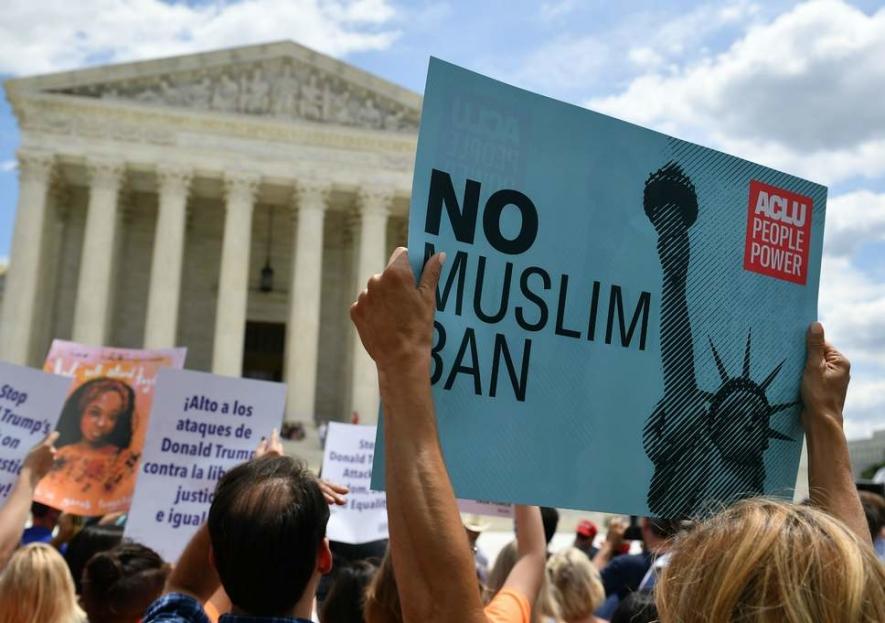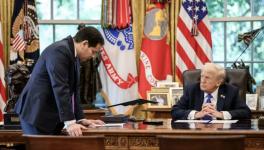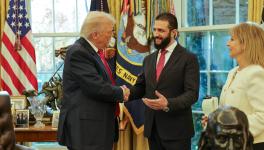US Supreme Court Upholds Ban on Travellers From Muslim Majority Countries

Travel Ban on Muslims in US
The United States Supreme Court on Tuesday upheld the travel ban on immigrants, refugees and other persons travelling to the country from mostly Muslim majority countries. The ban instituted by the Donald Trump administration was ruled legal by a 5-4 majority in the court. The decision was largely on ideological lines with the the five judges appointed by Republican presidents voting in favour of the decision and the four appointed by Democratic presidents dissenting.
While the legal battle is not entirely over yet - the Supreme Court sent the case back to the 9th Circuit Court of Appeals for a final decision - it is unlikely that any significant change will be made to the ban, which is in its third iteration since Donald Trump took over in January 2017. In its latest version, which was issued in September 2017, the ban applied to those travelling from Syria, Libya, Iran, Yemen, Chad, Somalia, North Korea and Venezuela. Later, Chad was removed from the list.
Also Read Trump Ends Forced Separation of Migrant Families, Only to Send Children into Detention
Many activists had pointed out that the bans were specifically targeted at Muslims, citing Donald Trump’s speeches during his campaigns, when he called for a complete shutdown on Muslims entering the US. That was also the basis of many legal challenges to the bans. However, Tuesday’s majority decision, authored by Chief Justice John Roberts, said "The text says nothing about religion." It added that “the order is expressly premised on legitimate purposes: preventing entry of nationals who cannot be adequately vetted and inducing other nations to improve their practices."
With regards to the President’s statements, Roberts wrote, “But the issue before us is not whether to denounce the statements. It is instead the significance of those statements in reviewing a Presidential directive, neutral on its face, addressing a matter within the core of executive responsibility."
Justice Sonia Sotomayor, in her minority opinion, wrote that “a reasonable observer would conclude that the Proclamation was motivated by anti-Muslim animus.” She also compared the present case to that of Korematsu V. U.S., a Supreme Court decision in 1944 which upheld the internment of nearly 120,000 Japanese Americans in barbed wire enclosures during World War II.
Also Read How the Muslim Ban Feels
President Trump reacted to the ruling on Twitter, writing “WOW”, and the White House claimed the decision was a vindication of its stand of the need to “vet those coming into our country.”
The travel ban was first issued on 27th January 2017, banning the entry of people from seven Muslim majority countries for 90 days. It also indefinitely banned the entry of Syrian refugees to the US and imposed a four-month ban on refugees from elsewhere in the world. The ban was blocked by courts in New York and Massachusetts. The 9th circuit court of San Francisco in February 2017 also ruled against reinstating the ban.
A second version of the ban came into effect in March 2017 but that too was blocked by a judge in Hawaii, as well as by another federal judge in Maryland. Both these judges said Trump’s anti-Muslim comments were proof that the ban was biased against Muslims and immigrants. In June 2017, the Supreme Court, while hearing an appeal, decided to restore parts of the ban, overruling lower courts.
The latest version of the ban saw the inclusion of Venezuela and North Korea, a move activists alleged, was intended to cover up the bias of the ban against Muslims.
Get the latest reports & analysis with people's perspective on Protests, movements & deep analytical videos, discussions of the current affairs in your Telegram app. Subscribe to NewsClick's Telegram channel & get Real-Time updates on stories, as they get published on our website.






















